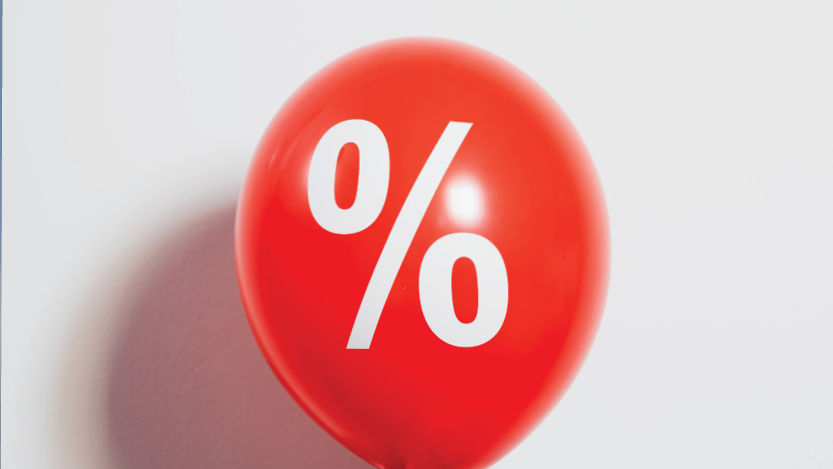Fixed income returns over the fiscal 2022 year were the worst on record. When share markets experience returns like that investors have understandably become conditioned to look for bargains, but fixed income markets don’t necessarily work the same way.
Any well diversified portfolio will include defensive holdings designed to reduce its overall volatility and cushion the effects of falling share markets. Fixed income investments normally play that role, and that typically means allocating to government or corporate bonds, which are two very distinct markets, driven by different factors.
Because bonds issued by governments of developed nations are almost certain to be repaid, the price they trade at is not normally influenced so much by their credit rating as the outlook for inflation in their home country. If the market expects inflation to rise, investors will demand a higher yield to compensate, which requires a lower price and vice versa.
By contrast, while inflation also plays a role in pricing of corporate bonds, credit risk is the biggest issue, that is, the risk the company defaults and you don’t get your money back. Consequently, corporate bond prices are more sensitive to the outlook for recession, when company earnings come under increased pressure. The more investors are worried about recession, the higher the premium, or credit spread, to investing in risk-free government bonds they will demand.
Andrew Papageorgiou, managing partner at Realm Investment House, explains, “Just like bargain hunting in the share market, there are short and long-term considerations for fixed income investing. However, unlike the share market, fixed income markets have nuances that are only revealed through information that’s tough for non-professional investors to get their hands on.”
For example, in considering whether it’s a good time to invest in Australian government bonds, it helps to know that, according to the swaps market, inflation is currently forecast to average 2.6 per cent over the next 10 years. If the 10-year bond is yielding 3.15 per cent, that gives you a ‘real’ yield (after inflation) of 0.55 per cent. Is that a fair return? The average real yield over the past 15 years was 0.8 per cent, which makes it look a little low, but the post-GFC average has been 0.13 per cent, which makes it look much better.
In the US the current real yield on 10-year bonds is minus 0.05 per cent, which sounds pretty lousy, but the post-GFC average has been minus 0.17 per cent. Still, with the uncertainty around inflation, a negative real return is tough to swallow. For instance, in June, the real yield was 0.5 per cent, but since then inflation expectations have tumbled.
Meanwhile, credit spreads, or the risk premium, for Australian corporate bonds are as high as they were during the March 2020 COVID crisis. Papageorgiou points out that’s not a good reflection of the current perceived risk of recession, especially compared to the crazy time of early 2020, but is more to do with technical factors. So parts of that market look attractive, particularly compared to the US, where credit spreads are much less generous.
For the longer-term outlook, Damien Hennessy, of Zenith Investment Partners, says the current market signals around whether inflation has peaked, or economies will recess are so mixed that it’s difficult to view fixed income as a set and forget strategy right now. He points out that bond yields in June spiked to levels where he recommended reducing underweight positions but have since fallen again making them less attractive.
For investors who are game to increase their allocation to fixed income, just like with shares, there are passive and active options. Rather than trying to pick individual bonds, which introduces concentration risk, a fund will provide diversification. For passive investors, Vanguard offers both Australian and international government bond ETFs, credit ETFs and blended ETFs.
For investors who prefer to leave the decisions to professional managers, there are many to choose from. A good adviser will be able to help with curated recommendations.
For investors who see fixed income markets as just too uncertain, one option for the defensive portion of a portfolio is cash, which also provides flexibility for picking up bargains. However, with inflation currently many times higher than the bank interest rates on offer, it is guaranteed to lose purchasing power.
Portfolios always benefit from holding defensive assets to protect them against volatility, and over the past 40 years the long-term decline in interest rates has been very kind to smart investors. However, just as with equities, the uncertain outlook for inflation is a game changer.
At Steward Wealth, we went underweight both government and corporate bonds a few years ago and instead invested into ‘private credit’, that is, deals that are not open to the public at large and are usually senior secured mortgages over building and property developments. These loans have the dual benefits of not trading on public markets, so their value doesn’t go up and down like a bond, and they typically pay generous interest of between 5-8 per cent per annum.
Those loans carry their own risks, which have become evident this year with several high profile construction companies going bankrupt. However, we are in regular contact with the lenders and feel comfortable with their assurances that their screening and due diligence processes have become even more stringent. At the same time, the commercial banks have reduced lending to the sector which is throwing up lots of very attractive opportunities at higher rates of return.





